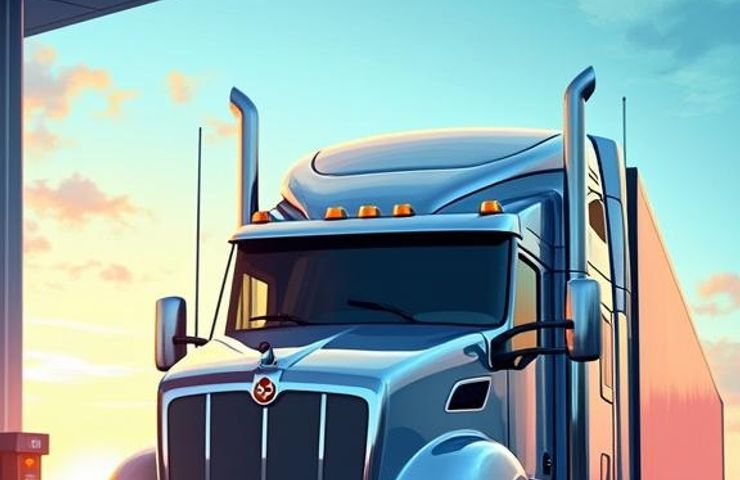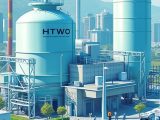
Clean Hydrogen Push: Pure Hydrogen Halts ASX Trading Ahead of Capital Raising
August 27, 2025Pure Hydrogen Corporation Limited — a publicly listed innovator in hydrogen production and fuel cell technology — has hit the pause button on trades at the Australian Securities Exchange. This halt, which will last until they unveil a major capital raising, highlights just how deep the pockets need to be to scale up clean hydrogen ventures. Around the world, investments in hydrogen are booming as governments and industry race toward zero-emission solutions for heavy transport and big industrial players. For a country gearing up to be a top exporter of green hydrogen, Pure Hydrogen’s decision is a pivotal moment in Australia’s energy transition.
A Strategic Pause
Trading halts aren’t exactly headline-grabbing news, but they’re par for the course when firms are about to drop material updates. In Pure Hydrogen’s case, this freeze buys time to lock in a non-renounceable placement—think of it as an invite-only share offer for institutional and sophisticated investors. That’s great for execution speed and regulatory peace of mind, but it usually means dilution for existing holders. Beyond the usual compliance box-checking, this pause signals a serious upcoming capital call to fund everything from electrolysis plants to compression units and refuelling hubs.
Funding the Hydrogen Push
Why the big ask? Because making hydrogen work for heavy transport is no small feat. Electrolysers, which use electricity to split water into hydrogen, can gobble up 40–50% of your project budget right off the bat. Layer on the costs of rolling out a nationwide network of hydrogen refuelling stations and certifying fuel cell trucks, and you’ve got a capital-intensive game. Industry vets say that economies of scale and module standardization will tame those costs—if you can secure hefty equity or project financing. This capital raise aims to supercharge Pure Hydrogen’s R&D, ramp up production of its signature prime movers, and speed up the build-out of essential hydrogen infrastructure to improve unit economics.
Pure Hydrogen’s Footprint
Since its ASX debut in 2021, Pure Hydrogen has been methodically piecing together an end-to-end hydrogen ecosystem. They’ve teamed up with logistics heavyweight TOLL Group to trial hydrogen-powered prime movers, deployed mobile refuellers for regional government fleets, and kicked off feasibility studies for solar-driven hydrogen hubs in Victoria and South Australia. By owning the entire chain—from onsite electrolysis and compression through to storage and distribution—they’re banking on vertical integration to keep costs in check and quality consistent. A recent framework deal with a renewable energy developer further underscores their strategy for locking in both feedstock and long-term offtake.
Australia’s Clean Energy Drive
Australia’s pledge to hit net-zero by 2050 puts hydrogen front and centre in its clean energy plans. The country’s abundant solar and wind resources make grid-powered electrolysis an obvious play, and states like Queensland and New South Wales have already laid down multimillion-dollar hydrogen infrastructure roadmaps. Federal grants and guaranteed off-take schemes have kickstarted dozens of pilot plants, but moving from small-scale demos to gigawatt-class electrolysers and export terminals means one thing: private capital. Pure Hydrogen’s upcoming placement could bridge that funding gap and help position Australia as the go-to green hydrogen exporter for Asia-Pacific markets.
Market and Investor Impact
A trading halt means shareholders can’t trade, and that lack of liquidity often brings jitters and short-term swings. Once Pure Hydrogen pulls back the curtain on placement details, analysts will tear into pricing, dilution levels and any anchor investors in the mix. A well-supported raise could reignite buying momentum, but if the offer comes at a steep discount, expect downward pressure on the share price. Meanwhile, early backers who get in now might lock down strategic partnerships and construction slots ahead of competitors chasing the same grants and grid connections.
Implications for Stakeholders
The ripple effects of this capital call stretch far beyond just investors. Equipment manufacturers—think electrolysers, high-pressure storage tanks and compressors—stand to see order books fill up if those large-scale projects get green-lit. Construction contractors could see a steady pipeline of work for plant builds, while logistics operators planning hydrogen fleet rollouts will finally get a clearer timetable for station availability. Regional communities pitched for new green hydrogen hubs might see fresh jobs and infrastructure upgrades. At the end of the day, this raise could unlock economic activity across the entire hydrogen energy market.
Technical Snapshot: Fuel Cell Vehicles
Hydrogen fuel cell vehicles (FCVs) convert hydrogen and oxygen into electricity through an electrochemical reaction, with pure water vapor as the only byproduct. The real draw? Refuelling takes minutes—comparable to diesel—and the range is hefty, making FCVs a strong fit for heavy-duty workhorses like prime movers. But costs are steep thanks to platinum catalysts, rugged high-pressure tanks and specialized power electronics. Getting production volumes up and securing government incentives will be crucial to push down per-unit prices and accelerate fleet adoption of hydrogen fuel cells.
Parallel Moves in the Sector
Pure Hydrogen’s trading halt is just one act in a bigger play. Across the ASX, other clean energy players—from biogas developers to battery storage outfits—have pressed pause on trading to shore up funding. It’s a reminder that government pledges alone won’t flip the switch on emerging tech at scale. The real missing piece? Private investment. If Pure Hydrogen nails its placement, it could spark a domino effect of capital raises as rivals and partners hustle to lock in their hydrogen ambitions.
Next Steps and Outlook
Investors are on standby for the ASX announcement, expected in the coming days. The market will be watching the total size of the placement, any discount to market price, and which big-name backers are stepping up. A solid institutional line-up could turbocharge Pure Hydrogen’s push into full-scale refuelling networks and fuel cell fleet deployments across Australia. If the raise falls short, they might have to explore joint ventures with energy majors or lean on project finance structures to keep momentum going.
In the race to build out hydrogen infrastructure, cash is the real differentiator between pilots and commercial rollouts. Pure Hydrogen’s trading halt isn’t just a box-ticking exercise—it’s a defining chapter in Australia’s quest to dominate the global hydrogen energy market. The outcome will reveal who’s got the financial firepower to turn the promise of hydrogen into a green reality for heavy transport and industry.



 With over 15 years of reporting hydrogen news, we are your premier source for the latest updates and insights in hydrogen and renewable energy.
With over 15 years of reporting hydrogen news, we are your premier source for the latest updates and insights in hydrogen and renewable energy.